Introduction
Attached to the 24-megapixel NEX-7 the Sony E 20mm f/2.8 scores an overall DxOMark Score of 17. A sharpness score of 10 P-Mpix is disappointingly low for lens tested on 24-megapixel sensor like the Sony NEX-7 and slight barrel distortion is noticeable. On the positive side the Sony E 20mm f/2.8 doesn’t suffer any noticeable chromatic aberration even in the corners with the aperture open at f/2.8.
Costing $1300 for the Sony NEX-7 and E 20mm f/2.8 combined, this camera / lens combination is a similar proposition to the $1100 Nikon Coolpix A high-end compact, both offering an APS-C sensor in a small shell with a wide-angle ‘fast’ prime lens for street photography and photojournalism.
Achieving a DxOMark score of 22, compared to 17 for the Sony E 20mm f/2.8, Nikon’s Coolpix A lens offers better image quality. An improvement of 3 P-Mpix for Sharpness on the Nikon optic may not on the face it of seem that impressive, but taking account of camera resolution the Nikon lens achieves this score on a 16-megapixel sensor, compared to the NEX-7’s 24-megapixel variety, making the Coolpix A lens much more efficient. A closer look at the sharpness results also demonstrates that while the Coolpix A lens offers something approaching homogeneous sharpness at all aperture settings the Sony E 20mm drops off in the corners between f/2.8 – f/5.6.
For vignetting, results are similar between f/4 to f/16, although the Coolpix A offers a +2/3rds Stop improvement at f/2.8, and whilst slight barrel distortion is evident on the Sony compared to the Coolpix A, neither lens suffers noticeable chromatic aberration. Taking all this into account the Coolpix A offers both better quality and better value, although with its interchangeable lens system the Sony NEX-7 is the more versatile option.
In summary the main advantages the Sony E 20mm f/2.8 lens has to offer are convenience thanks to its lightweight ‘pancake’ design, wide-angle field of view and ‘fast’ f/2.8 maximum aperture. Optically it’s far from perfect and although Sony have minimised chromatic aberration, sharpness score of 10 P-Mpix is too low for a lens mounted on a 24-megapixel sensor. Some minor barrel distortion is also evident too and lens shading at the maximum f/2.8 aperture requires correction in post-production. If it’s a small and portable high quality camera you require for street photography or photojournalism the Nikon Coolpix A boasts better image quality and value for money, but doesn’t offer the flexibility of the Sony NEX interchangeable lens system.


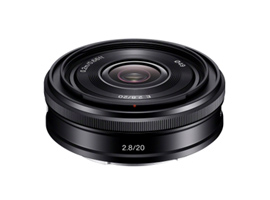


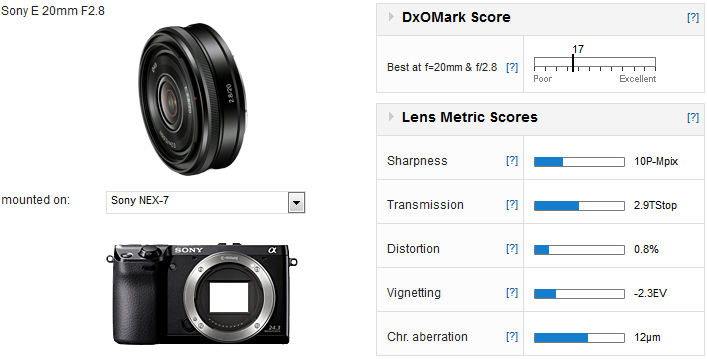
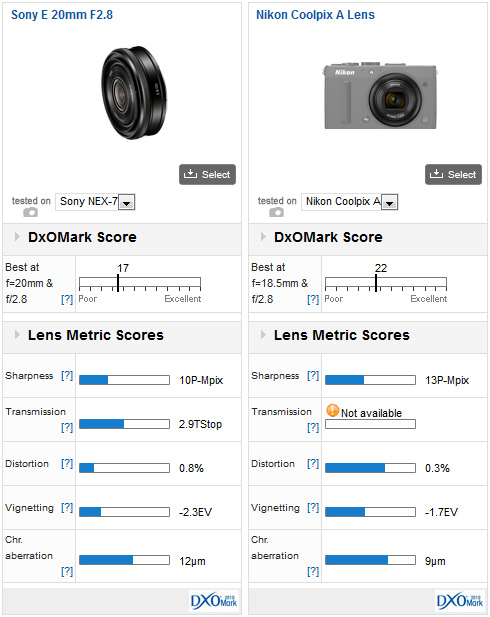
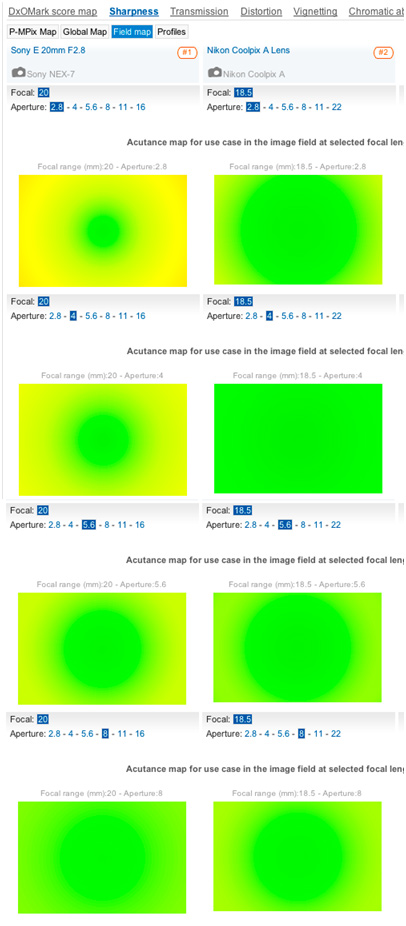
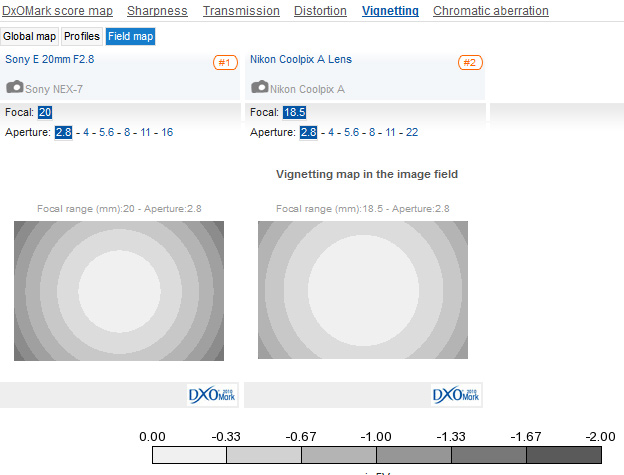
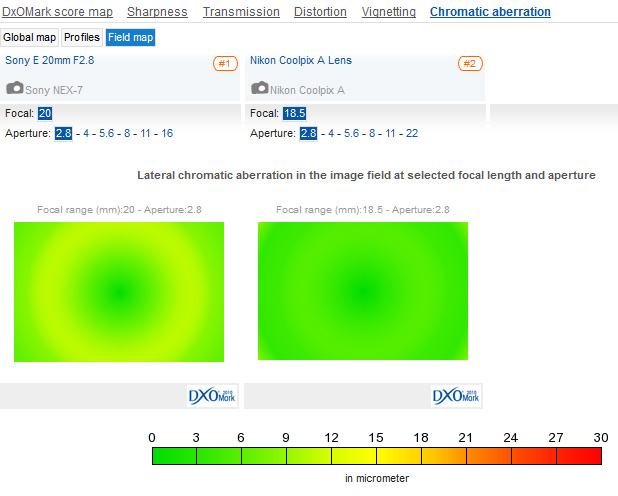
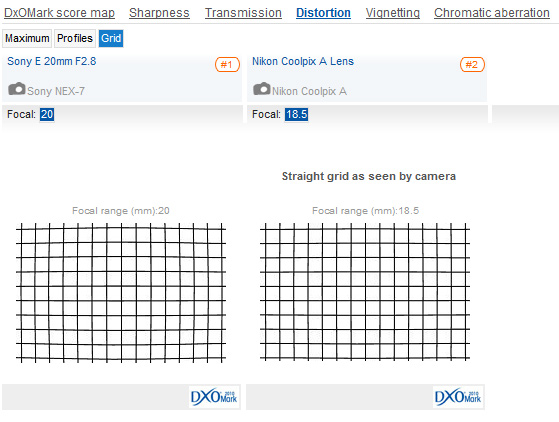
DXOMARK encourages its readers to share comments on the articles. To read or post comments, Disqus cookies are required. Change your Cookies Preferences and read more about our Comment Policy.